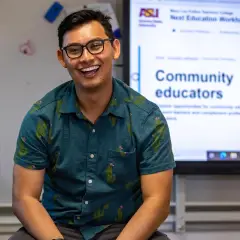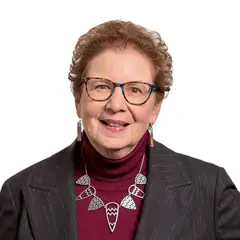The United States faces a serious workforce challenge—not just in raw numbers, but in how we prepare and support talent across sectors. As economist Tony Carnevale has emphasized, our economic future depends on a nimble, adaptive workforce. But the systems designed to develop that workforce—including our education system—remain rooted in outdated models.
This is especially evident in how we prepare the education workforce itself.
For too long, educator preparation has centered on a singular role: the one-teacher, one-classroom model. But today’s challenges—chronic staffing shortages, increased complexity in student needs, and declining educator satisfaction—require a broader view. We need to move from preparing individuals for fixed roles to building a dynamic education workforce development system.
At Arizona State University’s Mary Lou Fulton College for Teaching and Learning Innovation, we’ve spent the past seven years challenging this legacy model by designing and implementing team-based staffing approaches. When schools move to teams, new roles for educators and new ways of delivering teaching and learning become possible. This isn’t just about solving staffing shortages, though evidence suggests it can help. It’s about creating a workforce capable of delivering stronger outcomes for students and more sustainable roles for educators.
But these new roles can’t thrive within old systems. A redesigned education workforce demands a system to sustain it—one that spans recruitment, preparation, certification, and advancement, and is grounded in how learning actually happens.
To build that kind of system, we need more than surface-level improvements. We need a new architecture for how we develop educators, grounded in the real work of schools and the full range of learner needs.
Five Ways to Retool Educator Preparation
These five tools are not incremental tweaks. They are fundamental design shifts, each grounded in what learners need, how schools actually work, and what it takes to build a workforce capable of sustaining meaningful learning at scale.
1. Role Variance: Move from a one-size-fits-all model to a workforce with distributed roles and differentiated expertise.
Most educator preparation programs still operate under the assumption that there’s one kind of teacher and that everyone should be trained to do the same job, in the same way, for the same context. But schools today require a far more diverse workforce. Learners benefit from teams composed of lead teachers, small-group instructors, multilingual specialists, student success coaches, paraprofessionals, and even community-based educators.
We need a preparation system that aligns with this broader landscape. That means defining roles clearly, mapping competencies to each role, and designing preparation pathways that acknowledge difference, not only in the learners we serve, but also in the educators who serve them.
2. Team-Based Development: Ensure that educator preparation reflects the collaborative reality of schools.
In today’s schools, no single educator can do it all. Students need multiple adults working in coordinated ways to meet their academic, social, and emotional needs. Yet most educator preparation programs are still designed to train individuals, not team members.
We must embed the ideas of teaming structures, shared student rosters, and co-teaching experiences into the DNA of preparation. Clinical placements should prioritize authentic collaboration, allowing candidates to experience shared ownership of students and practice giving and receiving feedback within real instructional teams. Being an effective educator today means knowing how to contribute to a team and how to lead one when the time comes.
3. Job-Embedded Learning: Shift from front-loaded theory to paid, practice-based, contextual learning experiences.
Traditionally, preparation programs deliver content first and provide practice later. But effective adult learning doesn’t work that way, and schools can’t afford to operate that way anymore. The best preparation happens when theory and practice are integrated, contextual, and immediately applied.
We need paid, job-embedded learning experiences where aspiring educators are placed on teams, have clear instructional responsibilities, and receive structured feedback. These models should replace seat-time requirements with performance-based demonstrations of competence.
4. Liberated Expertise: Make the deep knowledge of teaching and learning available to all roles, not just certified teachers.
For too long, the professional expertise of educators—the science of learning and development—has been confined within credentialed teacher preparation programs. But a broader, team-based workforce requires that this knowledge be accessible to others: paraprofessionals, tutors, community educators, instructional aides, and career-switchers.
This means unbundling content into modular, role-relevant units that can be delivered across multiple platforms. It also means treating pedagogical knowledge as something to be shared, practiced, and refined in the open, not protected behind institutional gates. The goal is to build collective instructional capacity, not just individual expertise.
5. Modular Pathways: Design preparation systems that are flexible, stackable, and responsive to real career trajectories.
Educators today do not follow linear career paths, and our preparation systems shouldn’t expect them to. Some begin their journey as paraprofessionals or instructional aides. Others return to the classroom after time away or switch careers midstream. Still others want to specialize, mentor, or take on new roles without starting over entirely.
Modular pathways recognize that reality. They provide entry points at multiple stages, allow for the accumulation of credentials over time, and offer on-ramps and off-ramps that align with life and work. Crucially, they treat advancement as something that can be earned through demonstrated skill, not just formal credentials.
What Needs to Happen Now
The work ahead is not the responsibility of any single institution. It requires a coordinated, cross-sector effort to co-design an educator development model that meets the demands of a dynamic education system. States, educator preparation providers, and school districts must come together to reimagine a system that begins with learners and builds backward—one that reflects the realities of teaching today and the roles that will exist tomorrow.
States must modernize licensure frameworks, fund job-embedded preparation models, and remove outdated policy barriers that limit innovation. Preparation providers must move beyond isolated program design and help architect role-specific, modular learning aligned to evolving workforce needs. Districts must open their doors as co-developers of talent, designing team-based staffing models, hosting paid residencies, and offering advancement pathways beyond the traditional classroom teacher role. This is about more than reforming teacher prep. This is about co-creating a modern education workforce system that delivers better outcomes for learners, educators, and the future of work.





